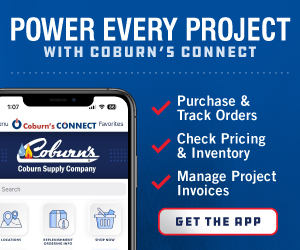
Editorial
Just Ramblin’: Creating a Business Plan
By Art Penchansky
Several new contractors have asked me about a business plan, so I decided to write this again, earlier in the year than normal.

Please keep in mind that this is a short version which will enable a reader to get started thinking of what he needs to steer him forward. It is in no way a complete description, and you may need a visit to a library to gather a full, more complete version.
Keep in mind that a plan may mean different things to different companies, depending on their current situation and their aim for the future.
A plan for a one truck operation will be vastly different from a company with many locations or many trucks, or what each is doing with different products.
The basic elements of a business plan are:
Cover Sheet: The cover sheet simply contains the name of your company, the location of the main operation, and contact information for key managers: you and anyone else running the firm including phone, email, and U.S. mailing address.
Executive Summary: This is an introduction and an encapsulation of the plan, but it should be written after all the elements are created. It should be one page in length and written based upon direction and requirements. Writing one to increase operations is different from writing one for a loan to get started with an objective.
Mission Statement: The mission statement of your plan is a one or two sentence statement that describes the purpose and culture of your business and its goals. It is as much for you as for potential lenders and investors because it encapsulates your overall company philosophy and direction. It should communicate the nature of your business and how the public will perceive you.
Business Concept: This is a broad, thorough description of your business identifying start-up objectives, requirements, personnel/skill level needs, a capsule identification of your position (including your strength and weaknesses), products and/or service identification and description. List your objectives according to the time periods you serve (example: summer, winter, etc.) and how you plan to get there.
Management Team: Who will run the business and how qualified are they to do so? Create an organizational chart listing managers and their functions. (Pay attention to the strengths required at each position) and acceptable weaknesses.
Industry Analysis: The industry analysis gives an informed overview of the industry, including market share, leadership, market shifts, costs, pricing, and competition. Include a report of the health of local, state and regional economies as they relate to your business. Discuss seasonal economic fluctuations as they relate generally to your company, how the economy will affect you and what practices are needed/in place to combat/take advantage of any situation. List growth trends, legal issues, strengths and weaknesses.
Financial Analysis, Goals and Objectives: This is the section that any banker or potential investor will most likely look at first and read most closely. Expect to be questioned on this more than any other section. Investors will generally tend to be experienced at zeroing in on holes or errors. Be prepared for them if outside financing is your main reason for the business plan. You may wish to consult a person experienced in preparing this information.
Generally, it is common and wise to start with a beginning balance sheet that gives readers a snapshot of your personal and/or business net worth. List your assets such as cash, receivables, prepaid expenses, property value; also, liabilities such as debts and accounts payable; and equity (stock value).
Then list your projections. Be as conservative and accurate as possible when estimating projected sales figures. Support the projections with evidence. Present a cash-flow section listing it on a weekly or bi-weekly basis.
One-Year Budget: This is the one-year operating budget. Include fixed costs, overhead, salaries, taxes, advertising, training, lease payments, etc. Variable costs must be provided for as they will occur unexpectedly.
Breakeven Analysis: This forecasts what your revenues need to be to cover all expenses. Accounting methods and credit policy will be most valued by investors who want to know how and when you will begin to be profitable, and how you will handle bad times or slumps.
Financing Needs: May be needed or not. It always costs money to start or grow a company. This will aid in setting key performance targets and determine whether you require additional financing. It will also help see and justify your business concept, what you value and what will be the value to others. (Every industry has its own financial structure and conventions, and every group of investors, if necessary, has its own set of standards for lending money.)
Summary: A page or two devoted to reinforcing what you’ve presented for consideration, or how you will run your organization for profit. Consult other business plans, and do not be afraid to utilize other structures, and don’t utilize their information.
Appendix: Show any supporting documents, charts, or indexes you have that support your plan for a specific audience. It may be bankers, lenders, or yourself and your partners and managers.
Treat this presentation as a starting point. There are myriad books available in your public library and several very good on-line locations to aid, add to, or detract from your concepts.
Please have a safe and joyful holiday season, and a wonderful, profitable New Year.
Sincerely… Art.














